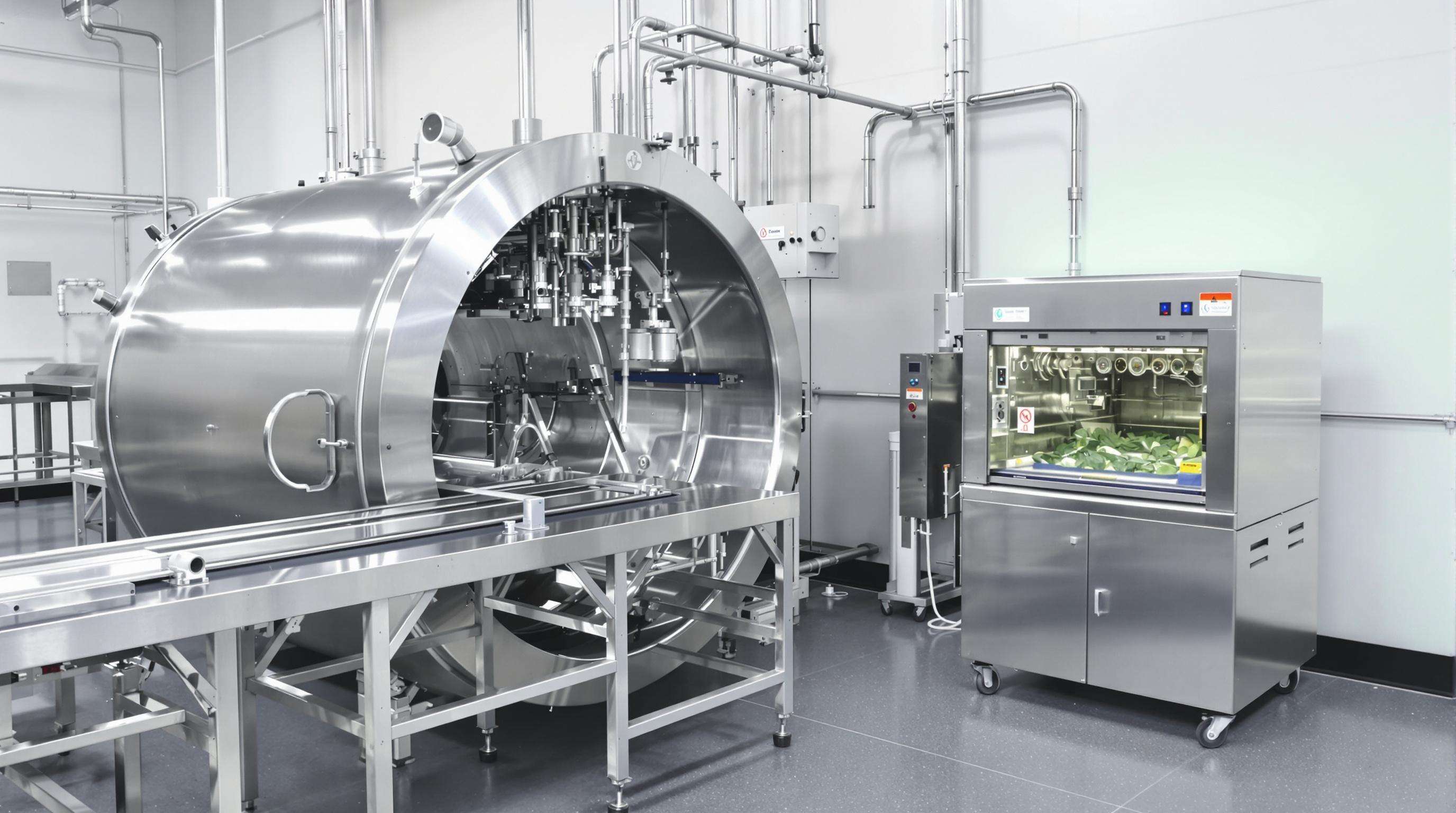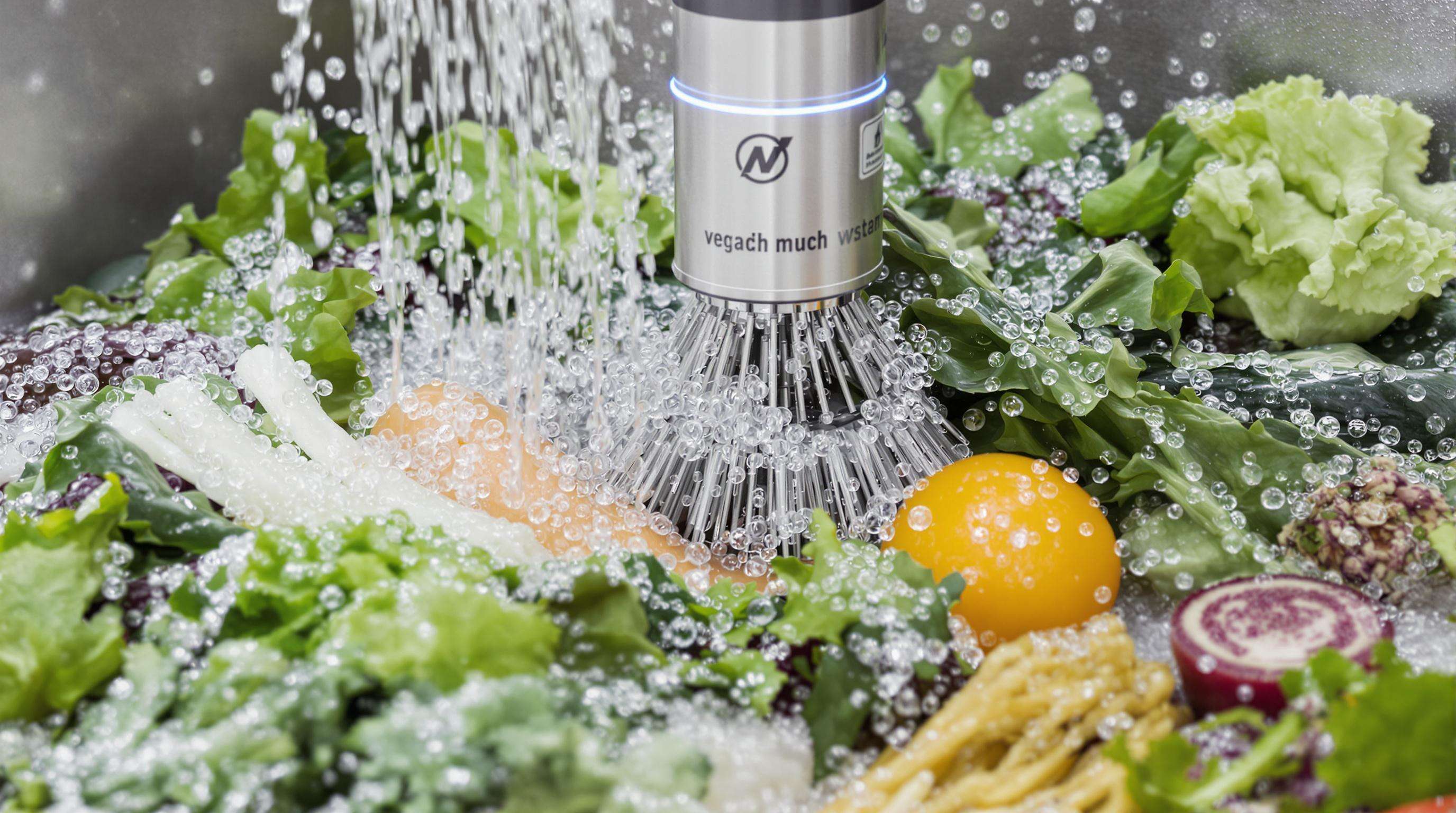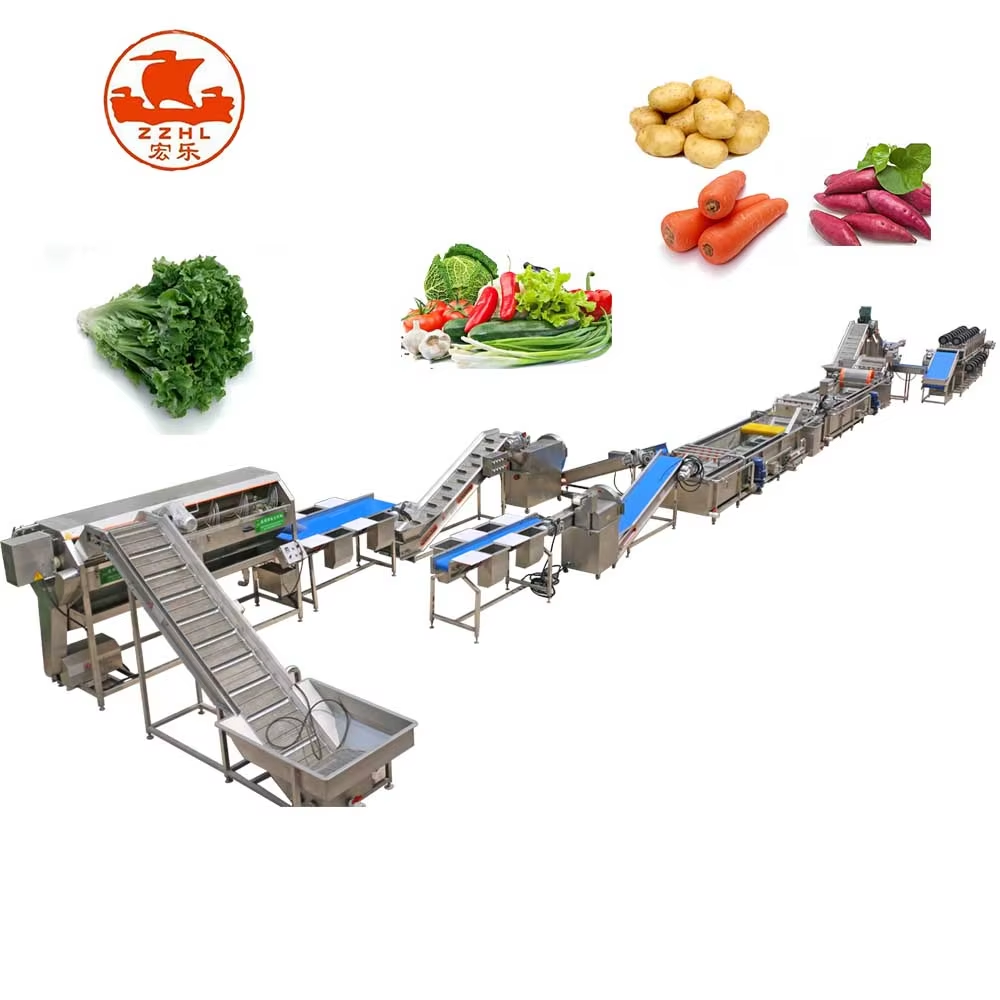Eléctrica vs Manual Lavador de verduras s: Comparaciones Operativas
Modelos portátiles a batería para cocinas pequeñas
Las lavadoras eléctricas apilables (con capacidad de 2-5 kg) y las secadoras ofrecen grandes beneficios en espacios pequeños, ya que están diseñadas para encajar en lugares reducidos y ofrecen funciones automáticas que facilitan el lavado y secado. Normalmente funcionan con baterías recargables de 18V-24V que proporcionan entre 30 y 45 minutos de "tiempo de funcionamiento", suficiente para lavar hojas verdes o frutos delicados. A diferencia de los modelos manuales, los sistemas con batería proporcionan una presión de agua uniforme por defecto (15-25 PSI) y evitan el esfuerzo físico, pero son de menor tamaño y no tienen la capacidad para procesar eficazmente tubérculos.
Sistemas operados por pedal para procesamiento de alimentos sin conexión a la red
Los medios de los mecanismos manuales de pedal/cigüeñal funcionan bien en zonas rurales, donde no hay un suministro estable de electricidad y deben ser accionados por fuerza humana para hacer funcionar las bombas de propulsión de agua y las escobillas rotativas. Un informe del sector AgriTech 2023 demostró que los sistemas de pedales procesan de 10 a 15 kg de hortalizas tuberosas por ciclo de 10 minutos con cero consumo de energía eléctrica. Y al ser totalmente mecánicos, prácticamente no requieren mantenimiento, aunque necesitan un 40 % más de esfuerzo por parte del operador en comparación con sus equivalentes eléctricos. Estos kits son especialmente adecuados para granjas orgánicas que priorizan procesos de bajo consumo energético.
Patrones de consumo energético según tipos de operación
El lavador de verduras eléctrico consume entre 0.5 y 1.2 kWh de energía eléctrica por ciclo dependiendo del tamaño de la carga y de las funcionalidades de calentamiento del agua, mientras que el operado manualmente transforma la energía humana en fuerza hidráulica a través de relaciones de engranajes. El mencionado estudio de AgriTech también descubrió que los modelos eléctricos requieren un 8-12% más de energía por kilogramo del producto limpio que la operación manual. Pero los lavadores automáticos alcanzan una eficiencia del agua del 92% mediante una recirculación inteligente del agua; los modelos manuales solo alcanzan el 78%: una compensación crucial para operaciones que buscan reducir costos de consumo energético frente a satisfacer necesidades de producción.
Máquinas de lavado de verduras industriales vs comerciales

Lavadoras de túnel de alta capacidad para fábricas de alimentos
Equipos Comerciales para Lavado de Verduras Los equipos comerciales para lavado de verduras utilizan sistemas de banda transportadora para realizar un ciclo completo de lavado con la capacidad de procesar hasta 500 kg de verduras por hora; los modelos más avanzados incluyen esterilización con vapor y chorros de agua bidireccionales. Estas máquinas también logran una eliminación del 98,6 % del suelo según pruebas independientes (Food Safety Quarterly 2023), cubriendo una superficie de 100 pies cuadrados (15-25 m²). Fabricados en acero inoxidable y diseñados para soportar uso continuo en entornos HACCP, son ideales para procesadores de guisantes congelados y fabricantes de zanahorias en rodajas.
Unidades compactas de sobremesa para cocinas de restaurantes
Los lavadores de verduras de uso comercial se adaptan a espacios compactos con dimensiones de 60 cm — 50 cm, y tienen capacidades de carga de 5 a 8 kg, por lo que pueden usarse para la preparación diaria de ensaladas en su restaurante. A diferencia de los modelos industriales, muchos de estos sistemas cuentan con cámaras de acrílico transparente, así como canastas de cepillos modulares ideales para fregar sin usar las manos y sin dañar las hierbas. El consumo energético es de un promedio de 0,45 kWh por ciclo, un 72 % menos que los equipos industriales según los criterios de eficiencia energética Energy Star 2024 para equipos de cocina.
Comparación de capacidad: 500 kg vs 5 kg por ciclo
La diferencia operativa entre los lavadores de verduras industriales y comerciales resulta clara al comparar métricas de eficiencia de recursos:
- Uso de agua : 0,8 L/kg en sistemas de túnel vs 2,5 L/kg en modelos de sobremesa
- Requisitos de personal : 0,2 horas de trabajo/tonelada vs 3,5 horas de trabajo/tonelada
- Ciclos : procesamiento continuo de 12 minutos vs lavado por lotes de 5 minutos
Las plantas de procesamiento de alimentos alcanzan tasas de utilización del 94% al operar lavadoras de túnel 22 horas al día, mientras que los restaurantes suelen operar unidades de mostrador 3 a 5 veces al día durante los períodos de preparación de comidas.
Tecnologías de limpieza en lavadoras modernas de vegetales

Sistemas de masaje con burbujas de alta presión
En las lavadoras modernas de vegetales, el sistema de masaje con burbujas de alta presión para desprender impurezas sin dañar los productos frescos está siendo cada vez más utilizado. Y voilà – poderosas burbujas cargadas de preocupación que generan turbulencia en el agua y eliminan el 92% en peso de los pesticidas aplicados en superficie (Food Safety Journal 2023). Esta tecnología funciona muy bien para verduras de hoja y bayas, reduciendo el estrés mecánico en un 40% en comparación con los procesos convencionales mediante aspersión, mientras se preserva la estructura celular. La acción oscilante de las burbujas llega incluso a los espacios más difíciles en vegetales como el brócoli y la coliflor, mejor que la inmersión sola.
Mecanismos de cepillado rotativo
Los sistemas de cepillos rotativos utilizan cerdas de nylon o PBT aptas para uso alimentario para limpiar cultivos de raíz o artículos con pieles gruesas. Los cepillos rotativos (15-30 RPM) son ajustables según el nivel de suciedad del cultivo; se logra una limpieza del 98% de la tierra en papas y zanahorias. Los diseños más recientes cuentan con rodillos de cepillo de doble dirección que reducen en un 25% los daños en la piel en comparación con los sistemas de rotación única. Ciertos modelos de gama alta incluyen sensores de presión integrados y contacto de cerdas con posición variable para adaptarse al diámetro y dureza de las hortalizas.
Técnicas de eliminación de tierra por ultrasonido
Los lavadores ultrasónicos de frutas y verduras utilizan ondas sonoras de 40.000 Hz para generar burbujas de cavitación que implosionan con una presión de 1000 atmósferas, eliminando contaminantes persistentes de la superficie de frutas y verduras. Se afirma que la tecnología es especialmente eficaz contra el tipo de suciedad predominantemente presente en la vegetación de raíz, como el suelo arcilloso, donde puede alcanzar una reducción microbiana del 99,9 %, sin requerir un tratamiento térmico. Estudios recientes indican que la tecnología ultrasónica reduce el consumo de agua en un 60 % en comparación con el lavado tradicional, manteniendo además un 30 % más de antioxidantes en los productos lavados.
Métodos de esterilización con ozono vs cloro
| Método de esterilización | Reducción Microbiana | Subproductos Residuales | Costo Operativo |
|---|---|---|---|
| Ozono (O3) | 99.99% | Ninguno | $0,18/ciclo |
| Cloro (Cl) | 99.95% | Trihalometanos | $0,12/ciclo |
Lavadora de verduras con generadores de ozono que realiza una esterilización sin medicamentos mediante la destrucción de la pared celular microbiana por oxidación. Aunque las unidades basadas en cloro son rentables en grandes volúmenes, la tecnología de ozono no genera subproductos dañinos de desinfección y es un 50% más eficaz contra los residuos de pesticidas. Sin embargo, la vida media del ozono es menor (20 – 60 minutos), por lo que debe temporizarse para coincidir con los ciclos de lavado para lograr la máxima eficacia.
Características clave a considerar al elegir lavadoras de verduras
Compatibilidad de materiales: Verduras delicadas vs hortalizas de raíz
Con las adecuadas capacidades de manipulación de materiales de los lavadores de vegetales, la limpieza es óptima sin causar daño alguno. Las hojas tiernas, como espinacas y lechugas, necesitan un sistema de bajo impacto, como agitación con burbujas de aire o chorros suaves de agua, para mantener la calidad de las hojas cuando se elimina la tierra. En contraste, las hortalizas de raíz (zanahorias o patatas) requieren mecanismos de cepillos rotativos de alta resistencia capaces de fregar sus pieles duras. Los fabricantes incluso están empezando a diferenciar los modelos según los tipos de implementos: rodillos de silicona suaves para hierbas, por ejemplo, frente a tambores abrasivos de acero inoxidable para tubérculos. Una encuesta de 2023 sobre equipos (sic) reveló que el 78% de los daños en productos ocurre durante el lavado, lo que resalta el papel de la compatibilidad en el control de calidad.
Niveles de automatización desde semiautomático hasta totalmente automático
Los sistemas modernos de limpieza de vegetales abarcan tres niveles de automatización:
- Semi-automático : Requiere carga/descarga manual con ciclos de lavado automatizados (reducción del 35-50% en costos de mano de obra)
- Programable : Preestablece parámetros del ciclo para diferentes tipos de productos, manejando 80-120 kg/hora
- Totalmente automático : Se integra con líneas de transporte para clasificación, lavado y secado (hasta 300 kg/hora de capacidad)
Según evaluaciones de tecnología postcosecha, los procesadores de alimentos reportan un 62% mayor consistencia en el rendimiento al pasar de sistemas manuales a automatizados.
Capacidades y eficiencia en reciclaje de agua
Los lavadores avanzados de vegetales ahora incorporan sistemas de agua de circuito cerrado con filtración multietapa:
- Los filtros de malla primarios eliminan residuos grandes
- Los separadores ciclónicos extraen partículas finas
- Los módulos de esterilización UV permiten su reutilización segura
Este proceso triple permite un reuso del 85-90% del agua en unidades comerciales, fundamental para operaciones que procesan más de 500 kg diarios. Comparado con sistemas de paso único, las configuraciones recicladas reducen tanto los costos de servicios (-40%) como los volúmenes de descarga de aguas residuales (-75%), alineándose con las normas ambientales ISO 14001.
Escenarios de Aplicación en la Industria de Procesamiento de Alimentos
Preprocesamiento para líneas de producción de vegetales congelados
Hoy en día, los lavadores de vegetales son esenciales para las líneas de alimentos congelados donde la reducción microbiana y la descontaminación superficial son la causa principal de la vida útil del producto final. Los sistemas automatizados de control de nivel crítico de agua ozonizada tienen una reducción del 99,7% de patógenos (Informe de Auditoría de Seguridad Alimentaria 2023) para cumplir con las estrictas normas de la UE para vegetales congelados. El lavador de túnel de alta capacidad procesa 1,2 toneladas/hora de verduras de hoja con un 40% menos de agua que los métodos manuales mediante filtración en circuito cerrado. Este nivel de eficiencia se alinea con el 56% del uso industrial del agua que las Naciones Unidas han reportado anteriormente proviene de la industria alimentaria, uno de los principales catalizadores detrás de las prácticas de producción responsables con el agua.
Estudio de caso de una instalación de empaquetado en una granja orgánica
- Una gran cooperativa orgánica del Medio Oeste experimentó una reducción del 18% en las pérdidas postcosecha desde que incorporó lavadoras ultrasónicas sin escobillas en su línea de empaquetado. El Sistema Libre de Suelo se encarga de la certificación orgánica USDA para microgreens y cuida las plantas delicadas al eliminar el 92% de las partículas. La mano de obra de preclasificación se redujo manualmente de 14 a 3 horas diarias, y el consumo energético del equipo de 2,8 kWh por ciclo fue compensado. Esto es coherente con las tendencias más amplias de la industria hacia la tecnología de Gemelo Digital (DT) para la optimización de recursos, donde los modelos de simulación pueden predecir las tasas de reutilización de agua con una precisión del 95% en estas escalas pequeñas.
Preguntas frecuentes
-
¿Cuáles son las ventajas de los lavadores eléctricos de verduras frente a los manuales?
La ventaja principal de los lavadores eléctricos de verduras es su automatización, lo cual reduce el esfuerzo físico requerido y garantiza una presión de agua constante. Los lavadores manuales, sin embargo, son adecuados para entornos fuera de la red y requieren más esfuerzo. -
¿Qué tan eficientes son los lavadores industriales de vegetales en comparación con los comerciales?
Los lavadores industriales tienen una capacidad de procesamiento más alta, manejando hasta 500 kg de vegetales por hora en comparación con 5-8 kg para unidades comerciales. Además, requieren menos agua por kilogramo y menos mano de obra por tonelada. -
¿Los lavadores modernos de vegetales son respetuosos con el medio ambiente?
Sí, muchos lavadores modernos incorporan características como reciclaje de agua y diseños eficientes en el consumo de energía que reducen significativamente los costos de servicios públicos y la descarga de aguas residuales. -
¿Qué tecnologías de limpieza se utilizan comúnmente en los lavadores de vegetales?
Las tecnologías comunes incluyen sistemas de burbujas de alta presión con masaje, cepillos rotativos, eliminación de suciedad por ultrasonido y métodos de esterilización con ozono o cloro. -
¿Qué debo considerar al elegir un lavador de vegetales?
Considere factores como la compatibilidad de materiales, nivel de automatización, capacidades de reciclaje de agua y las tecnologías específicas de limpieza empleadas por el lavador.
Tabla de Contenido
- Eléctrica vs Manual Lavador de verduras s: Comparaciones Operativas
- Máquinas de lavado de verduras industriales vs comerciales
- Tecnologías de limpieza en lavadoras modernas de vegetales
- Características clave a considerar al elegir lavadoras de verduras
- Escenarios de Aplicación en la Industria de Procesamiento de Alimentos
- Preguntas frecuentes

